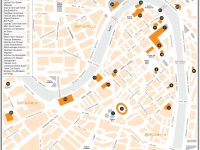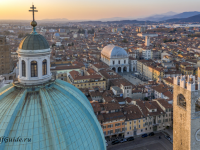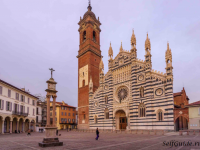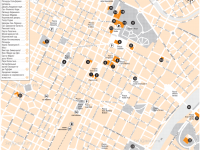Главная > Испания > Андалусия > Кордова > Экскурсии и маршруты
В давние времена территория Андалусии и Испании была частью Римской империи. Римская империя пала и территорию заняли племена вестготов, потом пришли арабы, которых вытеснили христиане. Но наследие с римских времен можно найти по региону вплоть до наших дней, причем не только в самой Кордове, но и в окрестностях.
Туристический маршрут вокруг Кордовы: по римским следам
Древнеримские карьеры в Peñatejada
Only three kilometres from Cordoba and thus still inside the municipal district, on the national highway 432 which runs over the 1st-century road that connected Corduba and Emerita Augusta (Merida), stands one of the most surprising enclaves of the city’s ancient cultural heritage. They are the Roman quarries at Peñatejada. Although the site has not been the subject of much archaeological research, it provides an excellent picture of mining operations in Roman times.
Given that Corduba was subject to a process of monument building as proven by researchers, and forums, a circus, a theatre and an amphitheatre were built, it is logical to conclude that local resources were exploited to the maximum extent. The stone from Peñatejada, among others placed in the mountain, with its excellent communications with the capital, provided the best opportunity for such maximum exploitation.
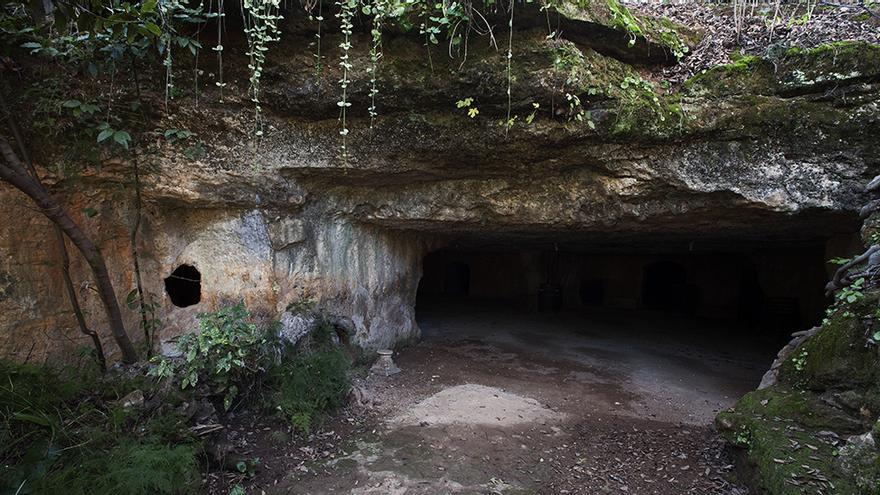
The site at Ategua
Also within the municipal boundaries of the city of Cordoba, next to the district of Santa Cruz, is the archaeological site of Ategua, a compendium of remains and relics which tell of the past from the Copper Age up to the Middle Ages, although the site still remains closed to the public.
Of the open book that is Ategua, the chapter dedicated to its Roman past is particularly prominent. Here, the Republic and the Empire have left innumerable footprints on the land. The remains of the temple, part of a domus or Roman house, a good part of the walls and the remains of silos used to store cereals are the principal attractions of Ategua for those interested in Roman civilisation.
However, the best known evidence of Ategua’s Imperial past is in written form: the Bellum Hispalense, a text that some authors attribute to Caesar himself. The work details the conflict in the mid-1st century B.C. in Hispania between the would-be Emperor, Julius Caesar, and his bitter enemies, Pompey and his heirs. Ategua, like Corduba, was allied with Pompey, and was besieged and destroyed by Caesar who, on seeing its ample cereal reserves, realised that it provided an ideal place for his troops to rest and recuperate. The battle for Ategua was the prelude to the historic campaign against Corduba in which more than 20,000 Cordubans lost their lives.

The Roman Baetica Route, touring history
The Roman Baetica Route is a non-profit association constituted by 14 town halls and the local authorities of Cordova, Seville and Cadiz which are placed in the tracing of the former August Route. The route includes de cities of Santiponce, Carmona, La Louisiana, Ecija, Almodóvar del Rio, Cordova, Montoro, Almedinilla, Puente Genil, Osuna, Marchena, Jerez, Cadiz and Tarifa. This route crosses landscapes of great geographical and natural interest like the Naturae Reserve of la Subbetica Cordobesa, the Campiña, the Nature Reserve of the Bay of Cadiz or the Valley of the Guadalquivir. The route has also signed agreements of collaboration with the regional government of Andalusia.
Almodóvar, the old Carbula
The first of those villages, Almodóvar del Río, was known as Carbula even before the arrival of the roman troops. The town was mentioned by the Roman geographer Pliny in his works and it is believed to have had a certain fame as a commercial port from which departed merchandise produced in the countryside. In addition to commerce, Carbula was noted for its potteries and mines. Its importance did not go unnoticed by the Republic which from the 2nd century B.C. onwards included the city within the colonial territory of Baetica.
Almedinilla
One of the most interesting examples in the route though Cordoba is the Roman Villa of El Ruedo. Located in the municipality of Almedinilla and covering an area close to 26,000 square metres, it has been a publically-protected Property of Cultural Interest since 2005.
The site was occupied between the 1st and 7th centuries, and it gives a detailed picture of rural life in ancient times. The Villa of El Ruedo developed into a complete arable and pastoral farming complex made up of residential and working areas. A necropolis was added at the start of the 3rd century.
Its inhabitants built the residential and production complex with the aim of exploiting the resources around the River Almedinilla and it remained in operation until the 7th century.
The residential area consists of various rooms around a peristyle, one of which stands out for its size and decoration, with walls covered with marble slabs and a floor executed in a multi-coloured mosaic which is partly preserved. Currently, a scale model is kept in the Archaeological Museum which is a reasonably faithful depiction of the villa in those times. Further, in the patio it is possible to study a monumental fountain which gives an impression of El Ruedo’s importance, as is also highlighted by the mosaics and sculptures kept in Almedinilla’s History Museum.
The residence at El Ruedo had reception halls and rooms, while the area reserved for agricultural production is a testament to the ingenuity of those Roman citizens who created a comprehensive irrigation system and developed industrial installations dedicated to the production of olive oil and ceramic pieces.

Roman Bacchanalia
Among the most interesting attractions of the Roman Villa of El Ruedo are the lunches and dinners organised after guided tours of the site. Those banquets recreate the social and cultural ambience of Republican and Imperial Rome. Dishes from the recipe book said to have been written in the first century by Marcus Gavius Apicius are served: fish and meats mixed with fruits and indigenous spices, accompanied by wine flavoured with roses, fruity red wine, and warm honeyed wine. While eating, visitors can enjoy the theatrical productions of classical works which allows them to discover the myths and stories of the ancients.
Montoro
Named Epora by the Romans, Monoro came to be of some importance in the 1st century A.D. Its splendid past can be discovered in its Municipal Museum of Archaeology which houses an important collection of Roman ceramics, various examples of hand mills and diverse sculptures, including a marble bust and a thoracato statue, dated to the end of the 1st century and declared to be Property of Cultural Interest. Realised in white marble, the sculpture portrays a high-ranking political dignatory or soldier standing in solemn pose. Its decoration is the reason why it has been linked to pieces in museums in Rome and Ostia. If some researchers are to be believed, all those pieces belong to a group of sculptures created in the same workshop during the reign of Emperor Trajan.
Puente Genil
The Roman Villa of Fuente Álamo, discovered in Puente Genil, constitutes some of the best evidence of Roman settlement in the town whose founding as such is traditionally dated to the 13th century. The Villa has provided an ample collection of mosaics which bear witness to the power of the owners of the estate. They are currently exhibited in the cloister of the old convent of La Victoria which has been converted into the Municipal Museum of Archaeology. Its remains, located three kilometres from the urban centre, appear to correspond to a arable/pastoral complex which survived from the 1st century A.D. until the early years of the Muslim conquest, although its greatest importance was in the 3rd and 4th centuries.
Fuente Álamo had an area set aside for nobility, and the remains of a home with its reception hall can be seen, along with an area dedicated to agricultural production.
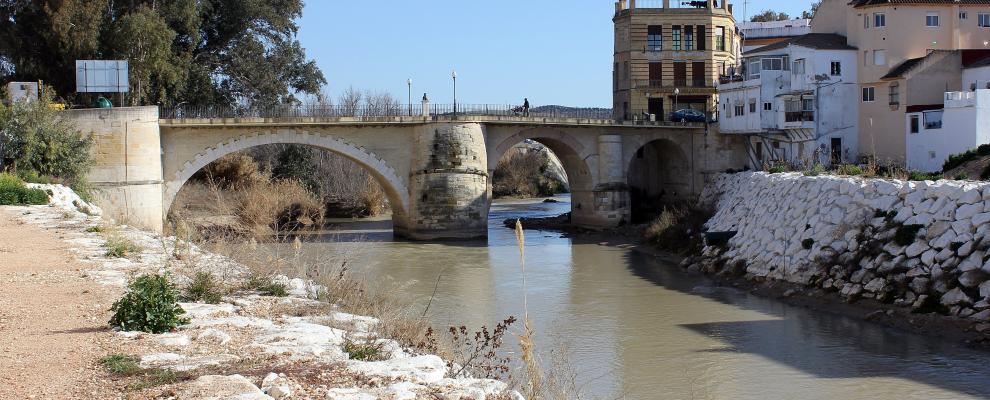
Главная > Испания > Андалусия > Кордова > Экскурсии и маршруты
